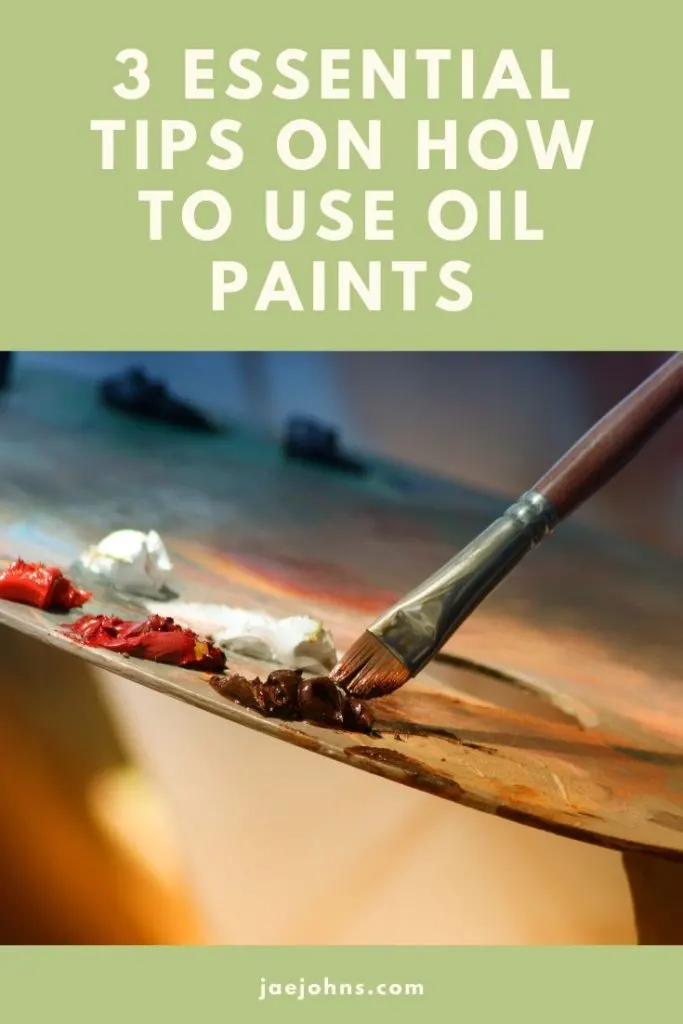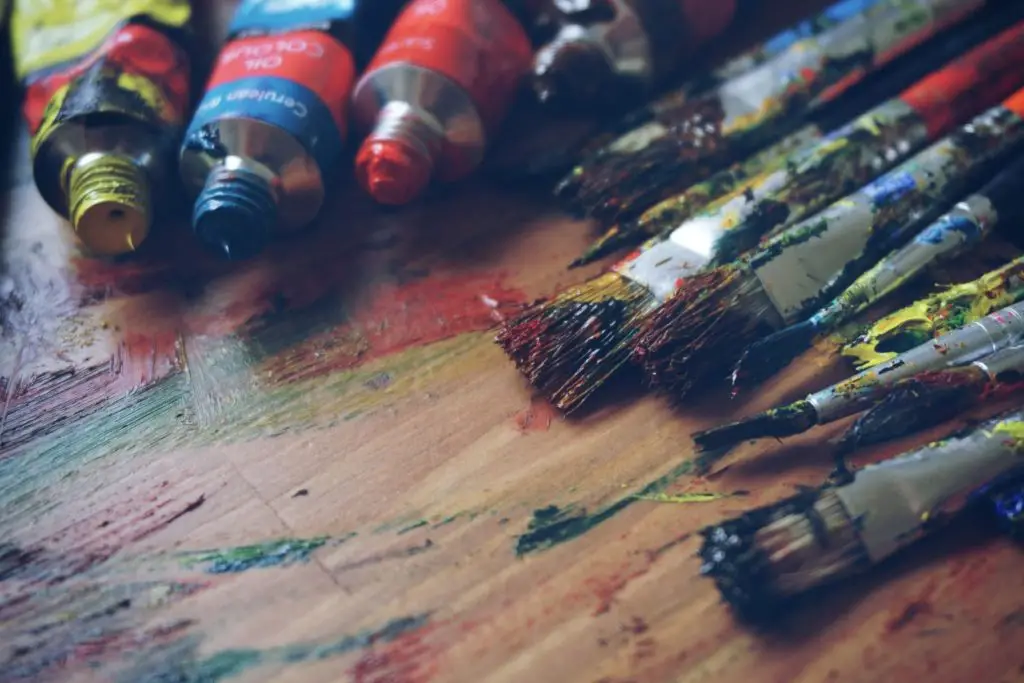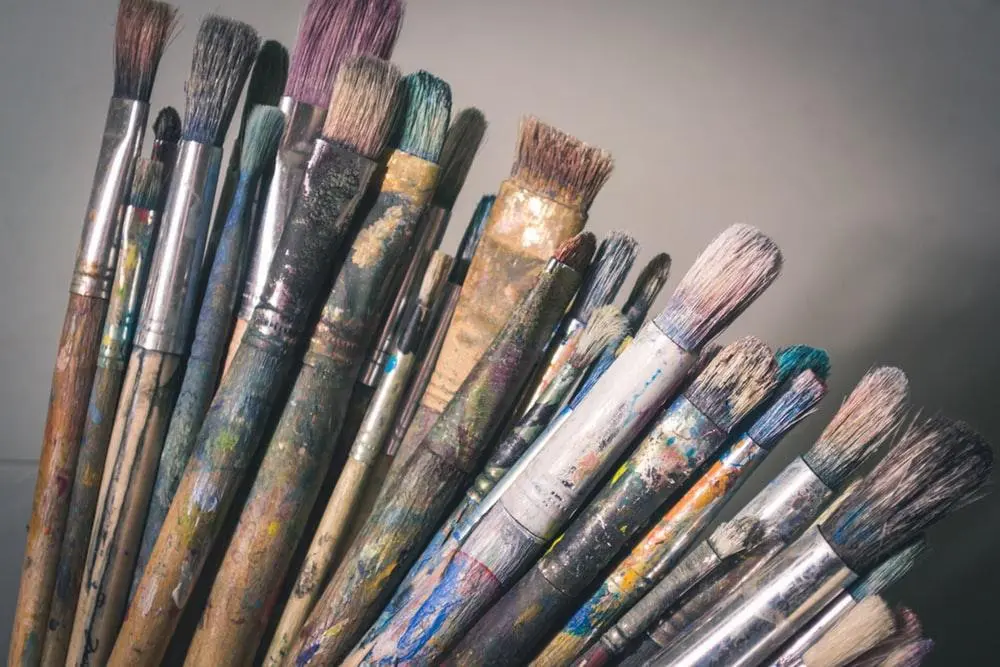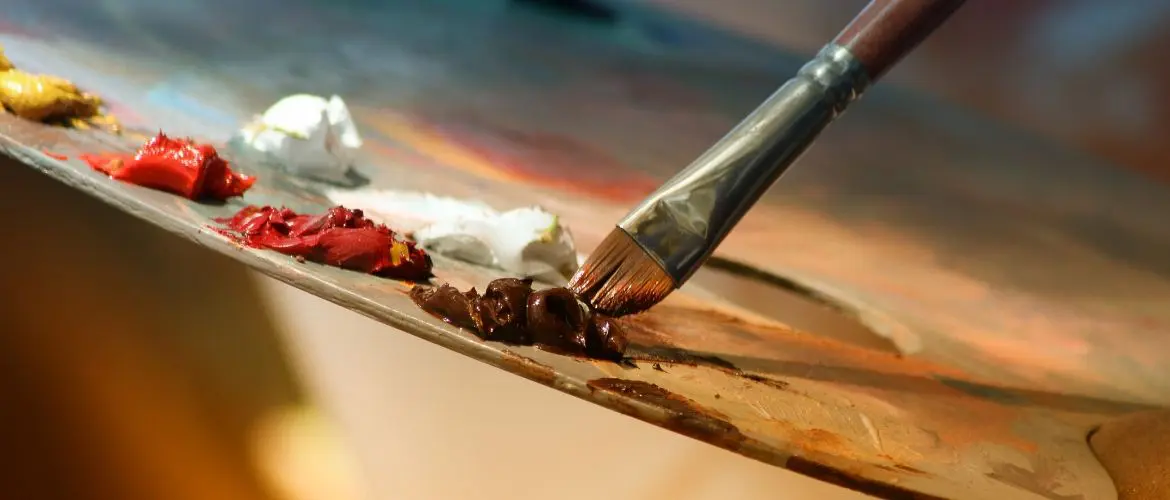 Oil paints are an amazing way to make compelling pieces of art, but there is more to learning how to use oil paints than you might think.
Oil paints are an amazing way to make compelling pieces of art, but there is more to learning how to use oil paints than you might think.
Learning how to use oil paints can sometimes feel a bit overwhelming because of the price, but don’t worry.
After you learn how to navigate this exciting medium, you will be glad to see how they can work out for you.
These magnificent paints have been used to make many masterpieces throughout history, which is why so many people love to use them.
They have a certain feeling of mastery around them that makes them fun to experiment with, but sometimes you want to get down to business.
This is why I brought together three quick tips to help teach you how to use oil paints!
 Photo by Andrian Valeanu
Photo by Andrian Valeanu
Learn About Your Paints
Oil paints are their breed, and it is for this reason that you have to learn about them. These aren’t the kind of paints that you played within a school.
They aren’t even anything like acrylics. Oil paints are a special kind of paint that does take a certain degree of understanding if you want to use them effectively. Don’t let this worry you. Oil paints are amazing, but to make amazing things, you need to learn how to use them in a way that benefits their distinctive color, texture, and style.
How Do They Mix?
There is no one size fits all when it comes to mixing paints, and they’re certainly isn’t when it comes to oil paints. Depending on what brand you end up buying, your paints might mix more easily or take a little more. Oil paints all have a different ratio of oil to pigment and it can influence everything about the paints that you use.
This is why so much of learning how to use oil paints involves learning how the colors mix. You can begin by taking two colors of your choosing and mixing them. In my opinion, it is always best to use less paint rather than more here to save on cost. Try swirling them around to see what it does to the color and presentation.
What Influences Their Texture?
As I mentioned, all oil paints are unique. Each set of paints will have different components that come together to make them what they are. These components will influence how the paint spreads, how it looks, and how it feels. Learning how to use oil paints doesn’t always have to include material science, but if you want to go into it, it will.
For example, there are a variety of different oil types that oil paints are made with. Each of these oils holds colors differently, influences the appearance of colors differently, and makes a different texture. Some oils are lighter, and others are more viscous.
They are mixed with pigment, which can also influence the color and consistency. Understanding what your paints are made of can help you to manage them more effectively. More importantly, it makes it possible for you to customize them to your heart’s content.
How Does Pressure Change Them?
When it comes to learning how to use oil paints, you want to understand what impacts them. Knowing what you can do to change the behavior and appearance of your oil paints is crucial. It gives you the chance to make different images and use different techniques to do so.
See how applying pressure to your paint works on them. Do they seem starker, or does the color come off in a thin fashion? Playing with your paints to see how they behave will give you more control over them when you need to have it. This is how you can embrace techniques more effectively. It is all about learning the limitations.
How Do They Dry?
Oil paints are notorious for the relationship that they have with drying. A huge part of understanding how to use oil paints is learning about their drying patterns and how long it takes. Oil paints are well-known for how long it can take for them to dry.
Many people consider it to be a detriment while others think of it as the price of greatness. I’m not sure that I feel strongly either way, but I do know that you must know how long your paint takes to dry. If you paint over them again when they are wet and it isn’t on purpose, chances are you will regret it.
Paint something and take the time to observe it to see how that works out for you. You might just learn how efficiently you will be able to work with this medium.
 Photo by Steve Johnson
Photo by Steve Johnson
Try Different Tools for Painting
Though we all love the classic image of a painter with nothing but paint and their iconic signature brush, it isn’t realistic. Sure, it would be nice to be able to make every masterpiece with a simple brush, but that is too limited. The real power of painting lies within how you many different things you can do with the right tools.
A single brush stroke might be a good start to a painting, but chances are that you want more from it. Using the right tools can help you control the paint more effectively and use them to make truly great images. Learning how to use oil paints isn’t just about the paints. It is about how you choose to control them.
Embrace Different Brushes
There are so many different brushes that you can use while painting, and each of them provides a different experience. Brushes can be made of different materials that influence how the paint moves or how long they last. Their handles can be different too, some being more comfortable for certain types of hands. More importantly, different brushes can be used to create different effects.
Have Fun with Sponges
Finding out how to use oil paints with a sponge is one of the more fun endeavors you might have. Sponges are an invaluable tool when it comes to painting. They can be used to make exciting textures or even to make a unique spread of paint.
People love using them to make backgrounds for paintings, but I think they can be used in several different ways. Try mixing these with your oil paints and see what happens.
Learn About the Power of Blades
Using blades with paint is one of the more advanced techniques that painters like to embrace, and oil paint is great for it. One of the best things about oil paint is how thick it is.
Fortunately, its signature thickness and capacity for layers make it easy to work with when using blades. You can use a sharp edge to etch entire designs into your paintings for a particularly fun look.
See What You Have Around the House
Not all painting tools are the same, and not all of them have to come from the art store. A great way to learn how to use oil paint is to focus on experimenting. A great way to do this is to use other random items from around the house to practice your painting.
See what an old shirt or a sock can do with your paints. You might just find that it creates the perfect texture. One of the best ways to learn about the consistency and capabilities of paint is simply to do what you can with it. Learn how different factors influence it and go from there.
Embrace the Power of Layers
If there is one real benefit to oil paints it is how easy it makes it for you to make layers. Layers are one of the most powerful tools when painting. That is why a huge part of learning how to use oil paint is to learn how to make layers.
There are so many ways to go about this and you will love what it can do you for final products. Layers allow you to add a nearly unparalleled level of depth, which is why oil paints are so popular.
Learn to Sculpt with Your Paints
A big part of effectively using layers is learning how to make certain shapes or designs with them. When you do this effectively, you can truly sculpt with your paints, allowing you to add a new layer of depth. Learning how to do this isn’t that hard.
It is simply a matter of playing with your paints. Build up your paints and see how you can push the bulk of the paint around to make exciting shapes. This will bring life to your image and make it easy for you to highlight certain areas more effectively. Many people find that they can even use these layers to give more substance to the elements of their work.
Experiment with Drying
While drying can be a bit of a sore spot when it comes to using oil paints, it can also be a benefit. Since oil paints have a slower dry time, they make it easier for you to get creative with drying. Take time to learn about how you can leverage this slow drying time to improve your work.
You might find that you enjoy smearing partially dried paint, or even that you can build layers more effectively before the paint has completely dried. Leverage what you learn about the physical structure of the paint to use it for a more exciting outcome down the line.
Learn How Colors Bleed
Oil paints are known for their vibrant pigments and rich coloring, which is why blending them can be so great. Learn how your colors bleed in different circumstances. Check out how the paints interact when they just barely touch. Take time to see how your colors change when you layer them upon one another.
Does it change when the paint isn’t completely dry? What does that look like? Figure out how your colors interact and learn how to leverage this for a better outcome. Since these colors are so bold and exciting, you might just find that they look great when subtly combined.
Play with Different Textures
If you have ever seen a traditional oil painting, you know that texture is one of the biggest parts of this medium. Oil paints are thick and able to be used in fun ways to make compelling textures. Build a pattern among the leaves of a tree, or create waves in the water of your image.
Oil paintings can be made to be three-dimensional, and that is part of the fun. See how a change in texture can help you convey your image more effectively, and have fun specializing in this craft. When the paint dries and you run your fingers over it, you will love knowing that you made it.
[do_widget id=custom_html-19]Conclusion
Oil paints are one of the most popular paints throughout history, and it is easy to see why. As you spend more time getting accustomed to these paints and what you can do with them, have fun. This is a medium that you can always learn more from, so keep experimenting.
Try new things and think outside of the box to see how you can make the art perfect for you. As more time passes, you might just find that you have a style of painting that no one else does. That is where the magic happens, so go find your signature.
Is there any tip on this list that you didn’t know?

